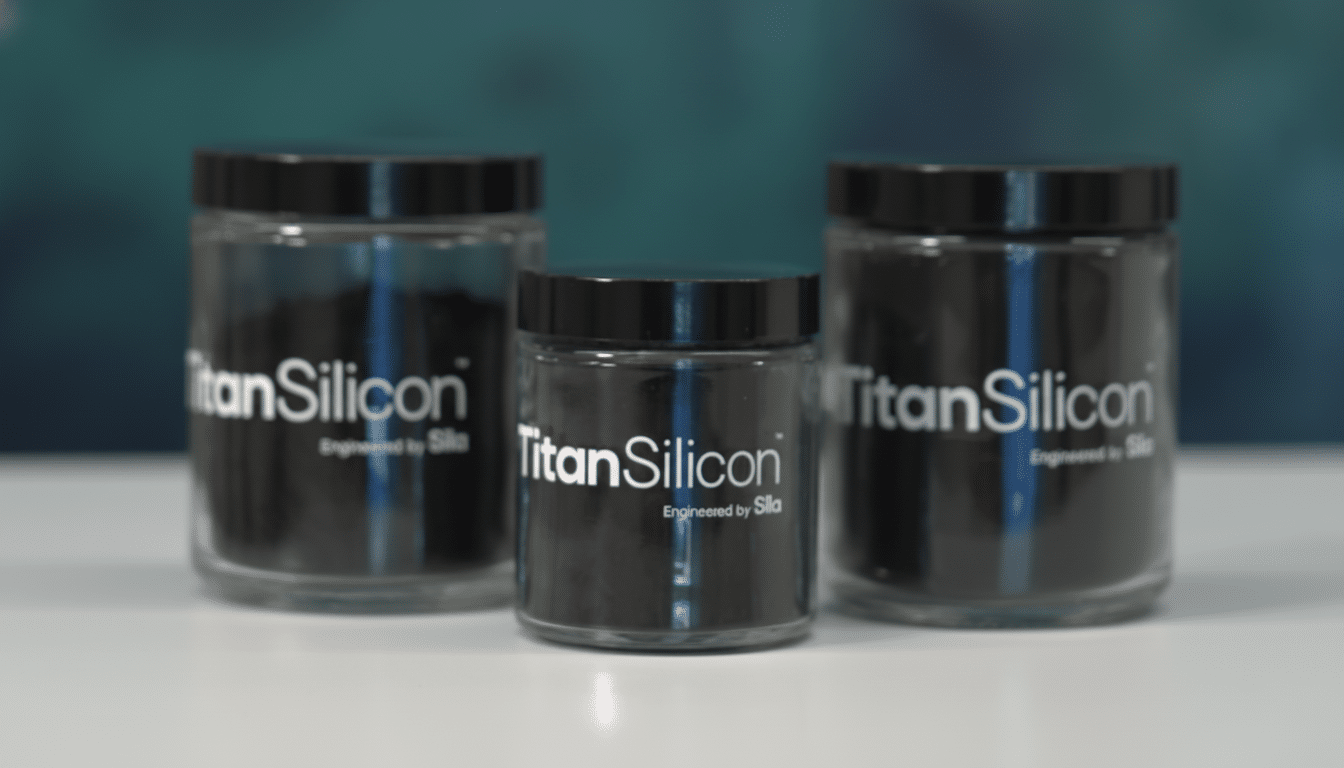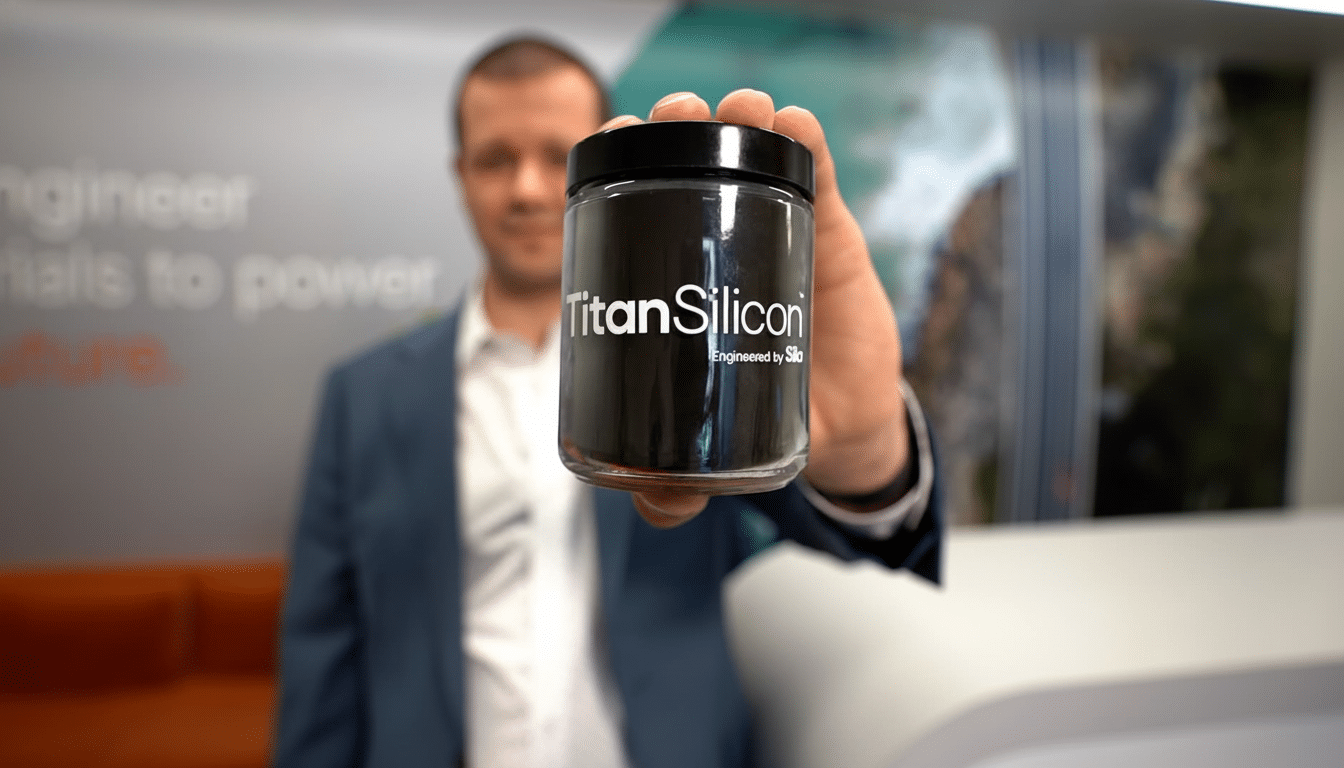Sila has started production at a plant in Moses Lake, Wash., producing silicon-based anode materials that aim to increase the energy density of electric-vehicle batteries. The plant is seen as the first auto-scale silicon anode factory in the Western world, with initial production intended for tens of thousands of vehicles and expandable to supply millions as demand grows.
The move is significant because silicon anodes have the potential to enable step-change performance for lithium-ion cells — longer range, quicker charging or smaller, lighter battery packs. It also bolsters a domestic supply chain that remains heavily dependent on graphite anodes made and processed in China, a reliance American officials and automotive manufacturers have identified as a strategic weakness.

Sila has signed supply agreements with Panasonic and Mercedes-Benz and sold samples of its material to aerospace, drone, and consumer electronics customers. Service volumes, however, will make the center of gravity, as tight qualification standards and scale economics intersect.
Why silicon anodes matter for next-gen EV batteries
Unlike graphite, silicon is capable of accommodating much more lithium — roughly an order of magnitude higher based on weight — paving the way to higher cell energy density. The catch has been durability: Silicon swells as it charges, which can pulverize particles and degrade the electrode. The generic answer of the industry is Si composites, in which the expansion is being handled while maintaining conductivity and preventing cycle life decay.
Sila’s white-shoe path, commercialized under the brand Titan Silicon, is to aim for a drop-in replacement of some graphite in existing anode lines. The silicon-rich anodes, depending on cell design, have resulted in 20% to as much as 50% greater energy density compared with conventional graphite-only cells, according to published results by manufacturers and independent labs. The U.S. Department of Energy and its national laboratories have for years recognized silicon anodes as one of the most promising near-term pathways to better batteries without waiting for an entirely new chemistry.
Increased energy density can be used in several directions: extended range, constant range with shrunk pack and cost, or faster charging at the same pack size due to lower internal resistance. Car manufacturers often juggle those advantages, weighing performance versus durability against the costs of developing new vehicles.
Inside the Moses Lake build and its strategic advantages
As such, Moses Lake provides three core benefits: low-cost hydropower abundance; industrial land being put to use with local infrastructure also in place; and nearness to important precursors, including locally sourced silane gas. Low-cost, clean electricity is a cost lever not just for energy-intensive materials processing, but also reduces the embedded carbon of the anode – which many OEMs now score in supplier audits.
Sila raised significant private capital to fund the project, and the company is set to take advantage of federal incentives that encourage domestic battery production. Policy measures — in particular, the Inflation Reduction Act’s production tax credits and consumer credit eligibility for vehicles with North American-made parts — have helped to tilt the economics for suppliers looking at U.S. expansion, according to analyses from the DOE as well as industry trackers including Benchmark Mineral Intelligence.

Later, runs out of Moses Lake will serve to validate that mass-manufactured material can replicate years of customer samples made on Sila’s pilot line. In the automotive world, that “golden sample” match process is fundamental; it opens up those multi-year ramps from test cells to vehicle platforms.
Competition and scale-up challenges in silicon anode production
Sila is not alone. Group14 also has an operation in Moses Lake, and a material production joint venture with SK Innovation in South Korea. Amprius produces its high-silicon anodes in the U.S. and with partners in Asia. Others, from incumbent battery giants to startups, are scrambling to give some laboratory breakthroughs the auto-grade volumes necessary.
The technical challenges are familiar to battery circles: how to control particles, mitigate first-cycle lithium loss, engineer binders and electrolytes that respond well in broad environments of temperature — all while hitting aggressive cycle life targets across a wide temperature band. The reward is considerable, but so is the bar — automakers generally require thousands of cycles, stringent fast-charge performance and hefty safety margins before awarding decade-long supply contracts.
The strategic context is no less stark. According to the International Energy Agency, more than 90 percent of the graphite anode material used in batteries is manufactured or processed in China. Transferring even a fraction of that capacity to North America with silicon-based alternatives derisks and decouples graphite supply chains from commodity and policy shocks.
What it means for automakers and drivers
Silicon-rich anodes provide OEMs with a measure of design freedom. For larger vehicles, a high-energy pack can accommodate the greater weight without range penalties; or for similar-range packs, the battery can lose volume to reduce weight and cost. In nickel-rich chemistries for instance, energy gains can mean material thrifting, while in LFP-based systems silicon can bridge the energy-density gap. Mercedes-Benz has publicly talked about a high-nickel anode alternative in its electric G-Class, and battery supplier Panasonic highlighted next-generation anodes on phones as part of its North American roadmap.
Sila claims its costs will hit parity or lower vs. Western-origin graphite as the line scales, which is broadly consistent with industry thinking that high-performance anodes benefit from learning curves and domestic credits. Chinese graphite will probably still be cheaper on a cash basis for the time being, supported by subsidies and more-relaxed environmental standards, but domestic content rules and logistics certainty can tip total-cost-of-ownership math toward U.S.-built vehicles.
If market pull meets expectations, Sila’s site has headroom to grow, and other sites could follow as automakers regionalize their supply. For the United States, the Moses Lake launch means more than just a factory opening — it’s a sign that the next wave of battery innovation, long incubated in laboratories, is transitioning to production at home.

